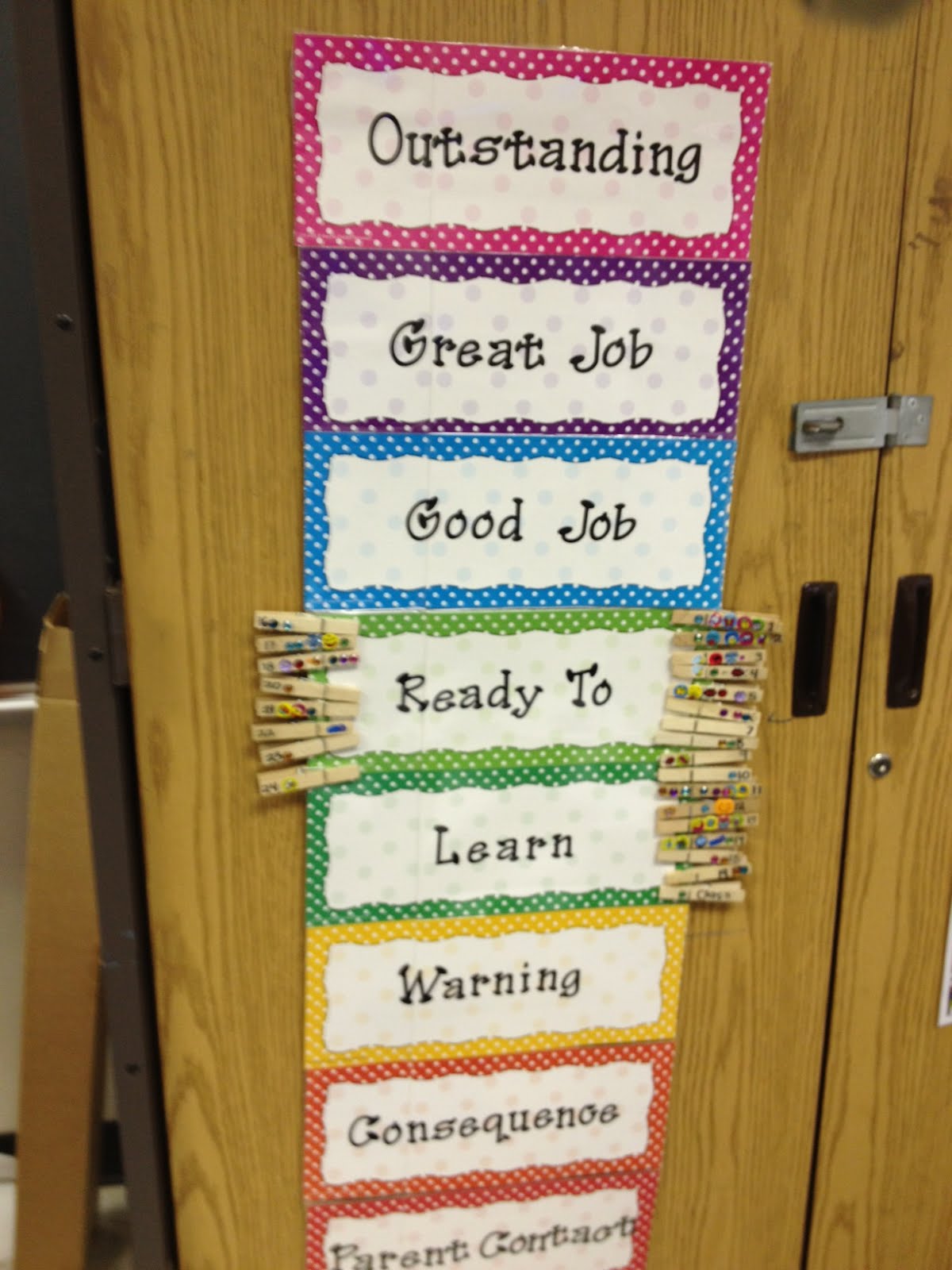The following are just a few examples of classroom management:
Quiet Zone
Buddy System
**This strategy will need direct communication between teachers, counselors and administration.
Supplies:
- A teacher with a free period (empty classroom)
- All administration, counselors and teachers open communication and agreement
- Student takes homework or a book to read in new classroom
Clip Up - Clip Down
 A Clip Up and Down chart is a chart that has each students' name on a clip and at the beginning of everyday they begin at "Ready to Learn." As the day progresses under the teacher's discretion students may move up or down the chart. This chart is placed in order to promote positive behavior not discipline or embarrass students if they are "clipped down." Promoting students to move up and not continuously move down is the goal.
A Clip Up and Down chart is a chart that has each students' name on a clip and at the beginning of everyday they begin at "Ready to Learn." As the day progresses under the teacher's discretion students may move up or down the chart. This chart is placed in order to promote positive behavior not discipline or embarrass students if they are "clipped down." Promoting students to move up and not continuously move down is the goal.*Teachers should understand the implications and take discretion when moving students down the board, moving one down or two may be acceptable, but if behavior reaches further involving administration is recommended.
A behavioral chart in the classroom depicting student's behavior throughout the day is a great visual for students to be reminded how they are doing in class that day. It is also a great reminder to students where they currently stand in regards to their performance in the classroom. Rewards or sincere praise are recommended for students' movement up in order to promote behavior.
Strategies continued...
- Model expected behavior
- Give instructions on behavior expected at the very beginning of class, school or in counseling session.
- Advise of consequences of behavior
- If, expectations are violated follow through with consequences


